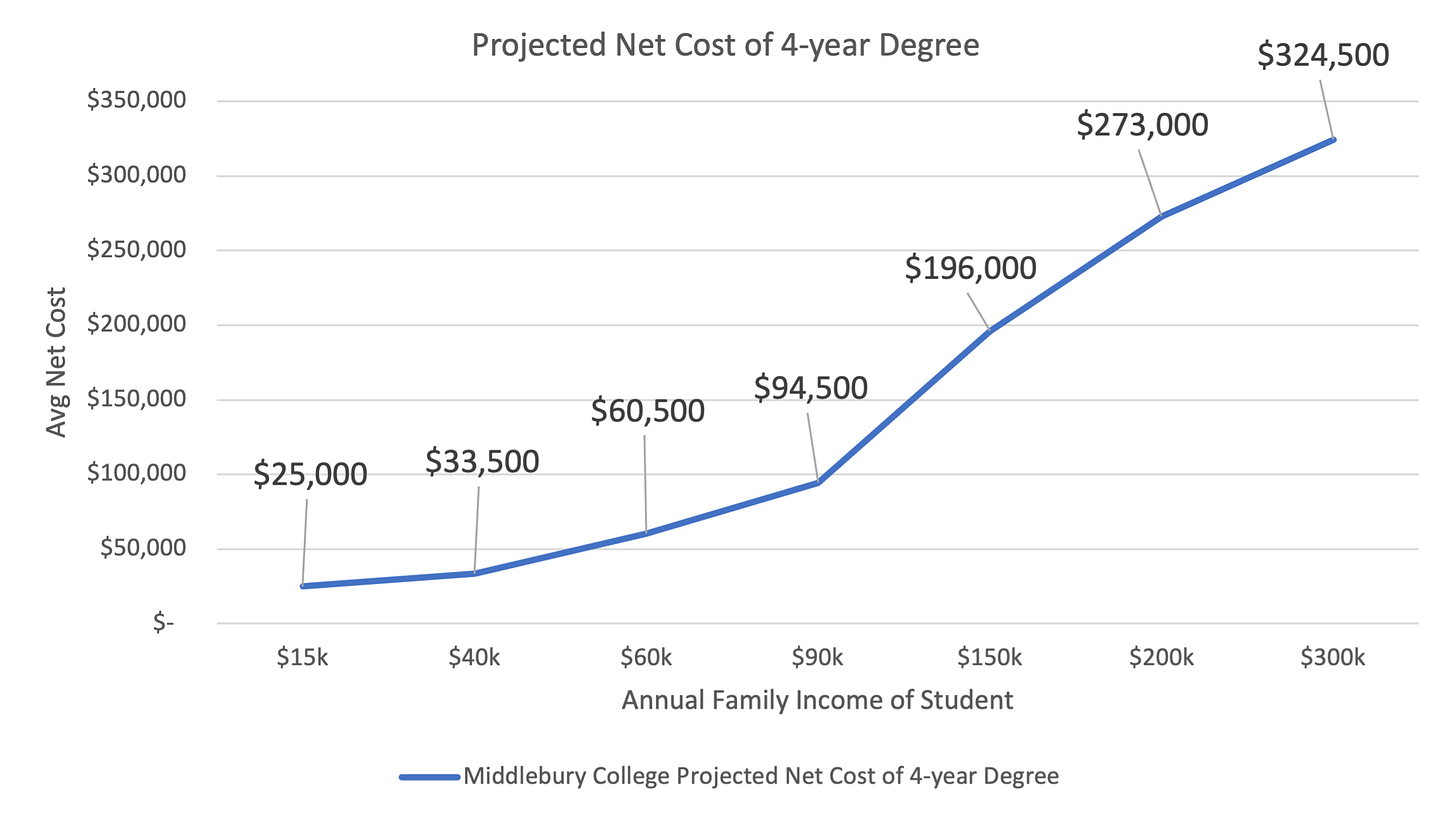2022 Pricing: Middlebury
CTAS cost forecasts for Middlebury College's 22/23 academic year and full 4-year program
CTAS is sharing its projections of 2022/23 academic year costs for individual colleges as a recurring feature. Similar information covering over 3,000 2- and 4-year schools is available at the CTAS site.
This post projects average net costs for Middlebury College in Middlebury, Vermont.
American life is changing so fast but, in places, time seems to stand still. Middlebury College seems to be one of those places. Located in the beautiful Vermont countryside near - but not too near - Burlington, the changes and stress facing American higher education seem far away. It almost seems offensive to evaluate Middlebury as a business. Each year, it admits roughly one sixth of its applicants and about 40% of the admits enroll. Each year, Middlebury’s raises its stated full cost by about 3%. Each year, its enrollment stays within throwing distance of 2,500. Each year is meets full need and gives away no merit aid. Plus ca change…
What makes this stasis possible? About a billion dollars. Middlebury’s continuing success is supported by a significant endowment. Standing at almost half a million per student in 2019, the fund on a per capita basis - though not up to the standards of Princeton or Harvard — holds quite a bit more than the Cornell, Penn or Columbia endowments if graduate students are included in the ratio.
Middlebury is in a good place. It can look down at its louche Vermont sibling, Bennington - with its tiny endowment, lack of selectivity and nose for bad publicity - and then turn its head with envy to its larger, richer neighbor, Dartmouth, a school with an even more lavish endowment. It may not be at the top, but it is doing well, thank you.
These projections represent informational projections that will change over time and are not a commitment either by CTAS or the applicable colleges. Figures are rounded to the $500 avoid false specificity. Final net cost numbers will differ from these estimates for many reasons: changes to economic trends, decisions by the colleges both about their own policy and enrollment, as well as decisions about individual students. Estimates of full program costs assume graduation in 4-years (for Bachelor’s) or 2-years (Associate) without any gaps, delays or added semesters/quarters. We take pride in our numbers so, if you believe any should be corrected, please reach out to us at support@collegetuitionadvisoryservices.com and we will work with you to resolve the issue.
Average Net Cost is a consumer-centric metric which shows costs as they are presented in commercial transactions outside of higher education. It represents a full-time student’s cost of attending college including: tuition, room & board, fees and estimates of supplies less institutional aid of all kinds (including need-based and merit), and less federal and state/local aid. Loans and other repayable amounts, along with work study earnings, are excluded and do not reduce the cost. Room and board charges are on-campus costs for residential colleges; for students attending non-residential institutions, the college's own estimate of such off-campus costs is mostly used. CTAS' Net Cost differs from the Net Price figure self-reported by colleges because it is comprehensive and covers all entering students, including the approximately 40% not included in Net Price calculations.
Please find more information at the CTAS site. CTAS provides data, reports and personalized assistance with college pricing and aid appeals.





